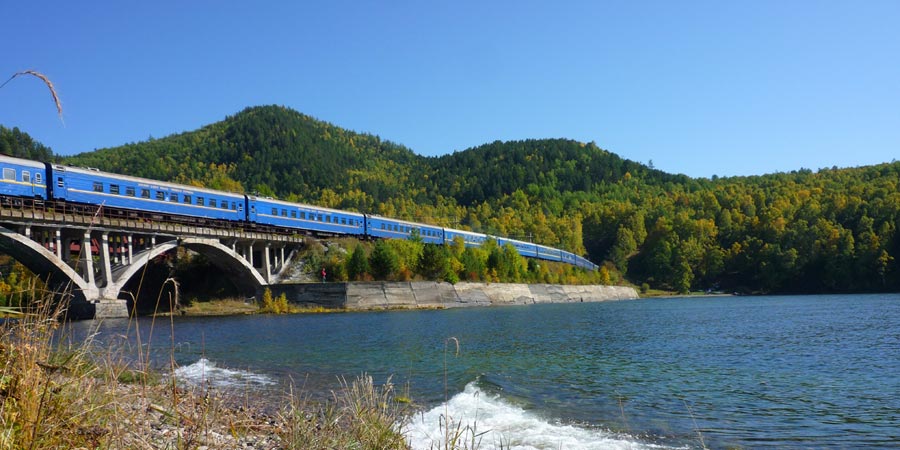When I started working for Great Rail Journeys, I could never have guessed how much train knowledge and expertise I would pick up over the course of four short years. From timetables for steam-hauled and diesel engines across the country, to being able to list the different classes and their benefits of the Golden Eagle Trans-Siberian Express I have come a long way, and while I'm not yet a fully-blown ferroequinologist, it was an innocuous Facebook thread a few months ago that sent me into a tailspin of intrigue. Whilst scrolling through social media mindlessly, as well are wont to do, I came across a friend's post which stated that, "The US standard railroad gauge (distance between the rails) is 4 feet, 8.5 inches. That's an exceedingly odd number. Why was that gauge used? Well, because that's the way they built them in England, and English engineers designed the first US railroads. Why did the English build them like that? Because the first rail lines were built by the same people who built the wagon tramways, and that's the gauge they used. So, why did they use that gauge then? Because the people who built the tramways used the same jigs and tools that they had used for building wagons, which used that same wheel spacing. Why did the wagons have that particular odd wheel spacing? Well, if they tried to use any other spacing, the wagon wheels would break more often on some of the old, long distance roads in England. You see, that's the spacing of the wheel ruts."
It went on to detail that Imperial Romans are the ones ultimately responsible for current American gauge sizes, seeing as it was they who built the first long distance roads over on this side of the pond, implying along the way that 4 feet, 8.5 inches were the original specifications for an Imperial Roman war chariot. Who knew?
This is the kind of historical 'fact' that gets right under my skin, making me want to find out as much about a particular subject as is possible. My first stint of 'research' comprised of flicking through other reader's comments and very handily a fellow train buff posted a link denouncing the whole fascinating theory! Of course I was disillusioned for a time, until I realised I could go on a whole new journey (no pun intended) to find out the truth. The full myth features none other than George Stephenson, creator of the ground-breaking new rocket locomotive, who apparently happened to notice cart grooves indented in the ground near Hadrian's Wall, and designed his wonder machine to have the same gauge setting - who could argue with centuries of successful engineering? And it's a myth that's been propagated for well over a century now; check out this quote from a 1905 issue of Popular Mechanics, a popular (as the name implies) publication at the time. "While inspecting some portions of the Roman wall through which chariots used to be driven, he (George Stephenson) discovered that deep ruts had been worn in the stone. Upon measuring the distance between them he found it to be in the neighbourhood of 4 ft. 8-1/2 in., and not doubting that the Romans had adopted this gauge only after much experience, he determined to use it as a standard in the construction of his railroads. From that time on this measurement has been the standard gauge in England and the United States."
Now if you were looking for some big revelation that concludes it's all actually related to Mayan prophecies or something equally unbelievable, then prepare to be disappointed as the reality is just fractionally different, but if we've learnt anything at all from gauges, it's that even half an inch can really matter. No one is surprised that early iterations of tools we're still familiar with, such as plates and cutlery to give just one example, have maintained recognisable features and this is because they've proven themselves to work - if it ain't broke don't fix it as they say. But that doesn't mean as technology develops we stubbornly refuse to adapt, far from it in fact, so just because the theory of rail travel was adapted from existing methods of transportation, it doesn't mean these methods were infallible.
The big question though has to be, if British descendants built the first railroads which was followed by decades of trade in railway parts between the two countries, why do some parts of the US utilise differing gauge sizes? During the Civil War the Confederacy had to contend with three differing gauge sizes, something many historians attribute to their eventual vanquish by the Unionists; "The Confederate government was never able to coax the fragmented, run-down, multi-gauged network of southern railroads into the same degree of efficiency exhibited by northern roads. This contrast illustrated another dimension of Union logistical superiority that helped the North eventually to prevail."
So it's less Roman soldiers we have to thank for the standardisation of American railroad gauges and more Union soldiers - if the confederacy had prevailed then the whole question of ancient wheel ruts would be forgotten. And one last interesting fact before you go on your way - ferroequinologist literally translates as the study of the iron horse, as in Latin ferrum = iron, equus = horse and in English ology = the study of.






